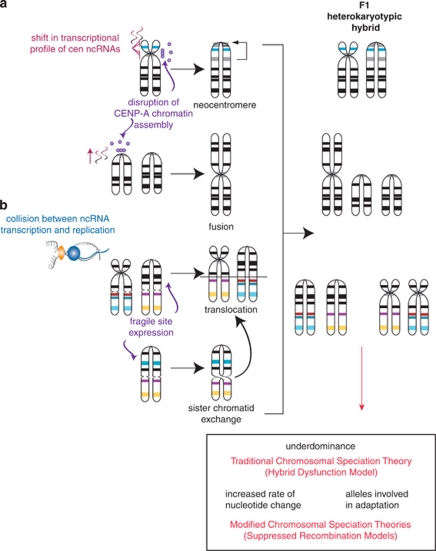Figure 3.
ncRNA facilitates chromosome breaks that can lead to karyotypic speciation. (a) A shift in centromeric (cen) ncRNAs (pink) from the native centromere to another location in the same chromosome results in the disruption of CENP-A nucleosomes (purple) and a change in active centromere location (neocentromere) (top). An increase in cen ncRNAs causes a disruption of CENP-A nucleosomes, resulting in a chromosome fusion event (bottom). (b) Collision of replication forks (yellow) and transcriptional machinery (blue) (as in Figure 3) results in R-loop formation and subsequent expression of fragile sites. These sites then lead to events such as translocations and sister chromatid exchange, which can also lead to translocations. All of the rearrangements shown in A and B lead to F1 heterokaryotypic hybrids after a carrier and normal individual reproduce. This hybrid event can lead to speciation through various means (box). Note: not all possible mechanisms or chromosome derivatives are represented.

